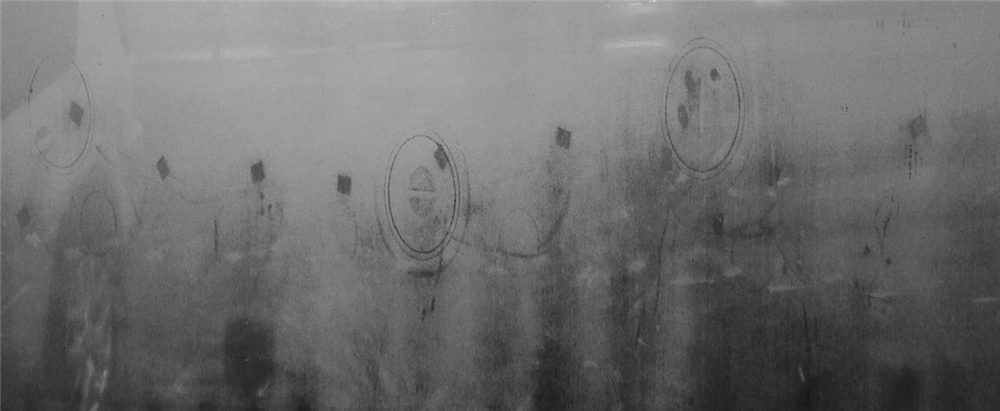Suction Cup - Glass Marks
Carey Glass Response to Suction Cup Marks

To whom it may concern
We have had some customers complaining about suction cup marks and pad marks that are evident in supplied IGU unit when condensation is present on the exterior of the building.
I have reviewed pictures that have been set similar to picture 1 below: and judging from the supplied photo, I see the issue is two-fold. First, there is condensation on the IGU (Insulated Glass Unit). Second, when that condensation formed, there is the
appearance of suction cup marks and pad marks on the exterior surface of the IGU.
Picture 1:

CONDENSATION:
Condensation forms on an object when that objects surface temperature goes below the dew point. The dew point is defined as the temperature where the air is 100% saturated with moisture - or where the air is at 100% relative humidity. This window probably has condensation because the surface of the window is below the dew point.
This is not considered a defect. What is happening on this window with the condensation is that the window is performing exactly as designed. It is blocking heat from one side of the IGU from reaching the other side. Exterior condensation on energy efficient windows is quite common, and it is perfectly normal. It does not affect either the performance or the longevity of the IGU. The limited warranty is still applicable.
Whether or not a window develops exterior condensation is actually a rather complex bit of environmental and performance issues. For example, condensation is much less likely to form on a cloudy night. Trees or other obstructions close to the windows, bushes under the windows, and even the length and angle of the soffit or other overhangs can affect the formation of condensation. A tiny change in either
temperature or humidity from one room to the next might raise or lower the dew point just a little bit and you might see a whole different level of condensation.
SUCTION CUP MARKS & PAD MARKS:
The large circular marks visible on the glass surface are referred to as suction cup marks the smaller rectangle are protection pad marks. The suction marks may occur on the glass surface as a result of the manufacturing or installation process. The protection pads are dividers between glasses to prevent from transport scratches.
During the manufacture or installation processes, suction cups are sometimes used to move the glass. What causes them is this:
If you examine the glass surface under a microscope, you will see the glass surface has peaks and valleys in it. Very small, minute particles on the suction cup may be deposited on the glass surface and settle into these valleys. The particles are typically not visible, but change the surface composition of the glass surface enough that it affects how water droplets adhere to the glass surface. This explains why suction cup marks are more visible on wet glass than on dry glass. Over time, with normal exposure to the elements, the suction cup marks will diminish or disappear. In the meantime, they can sometimes be minimized or removed with the use of a glass polishing agent, such as CRL’s cerium oxide mixed with water or ceramic hob cleaner. (Important Exception: You should not use any cleaning agent or polish on self cleaning glass)
CONCLUSION:
It is my professional opinion that the glass is not defective and is functioning properly. The suction cup marks were caused by suction cups being used to properly manufacture the glass. As mentioned above, cleaning the glass may minimize or eliminate the issue. Carey Glass International is willing to supply the CRL Cerium oxide product in an effort to resolve the issue.
I do not believe replacing the IGU will result in any different results. I have attached PPG Glass Technical Document 107 for your review in an effort to further explain the
Phenomena that is occurring.
Yours Sincerely
Sam Taylor
Group IMS & Quality Manager
Carey Glass International.



